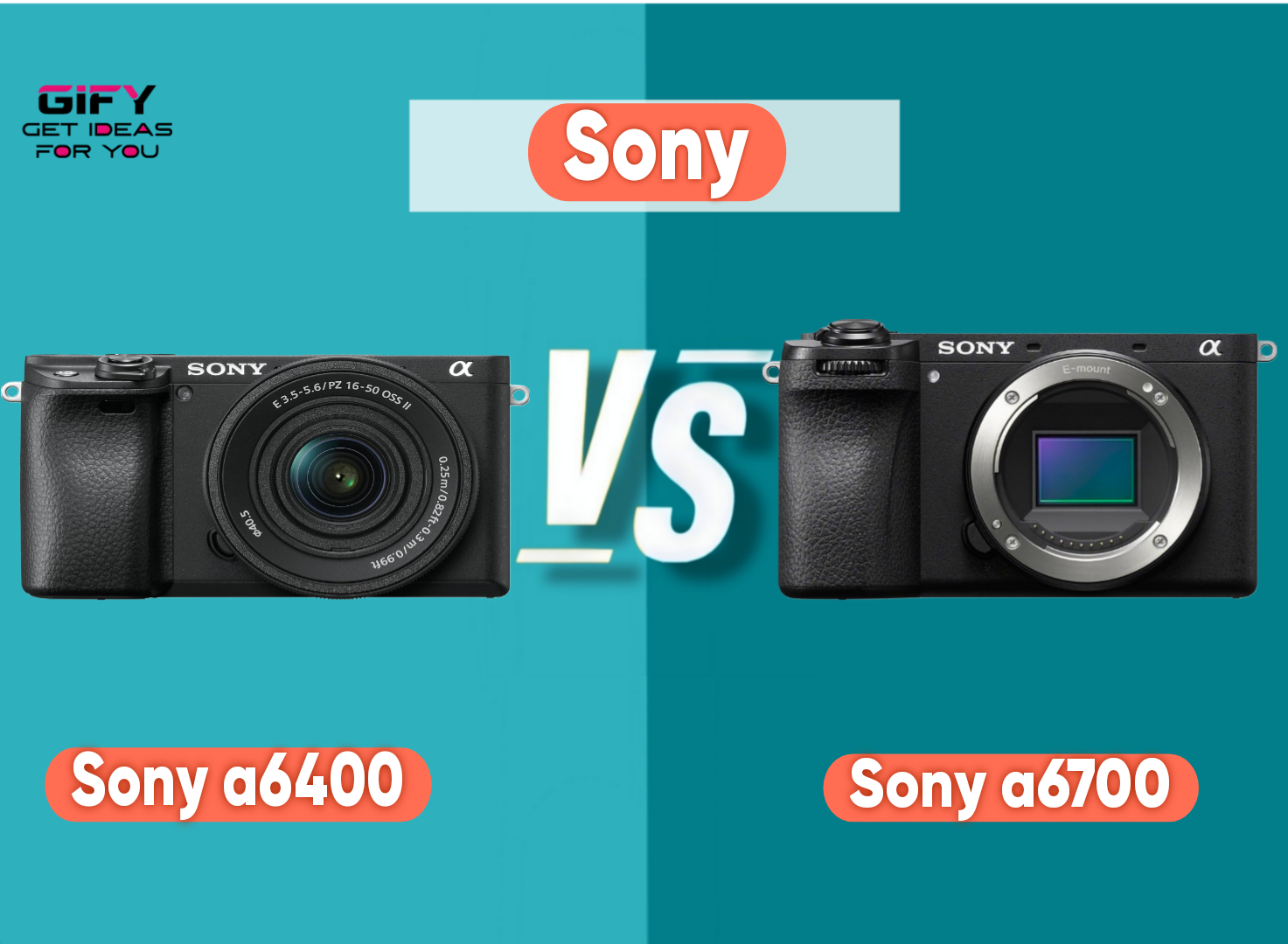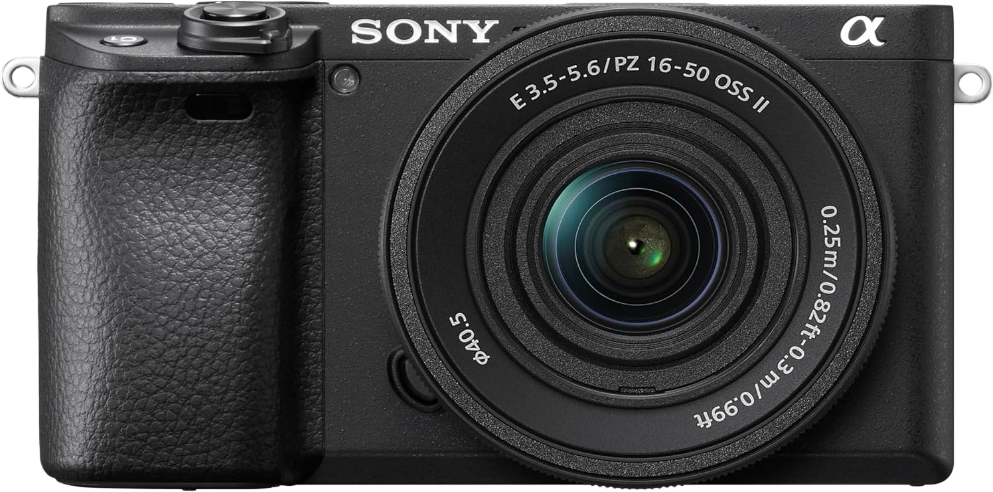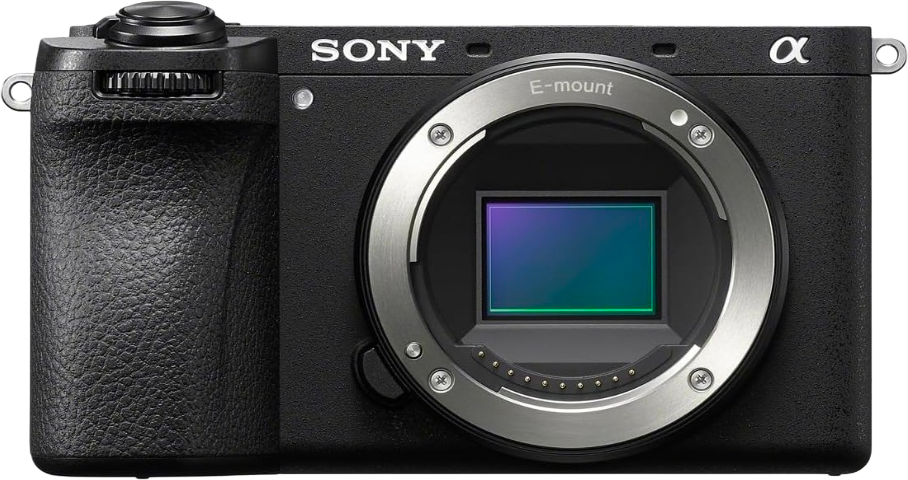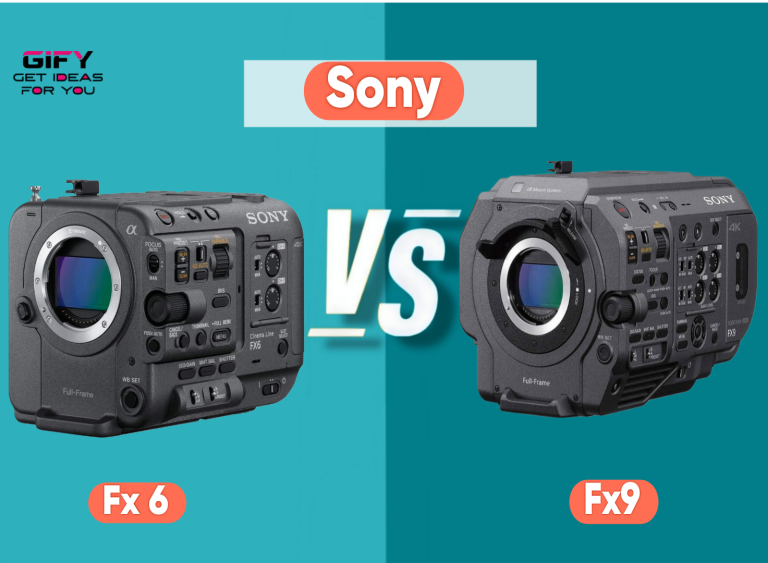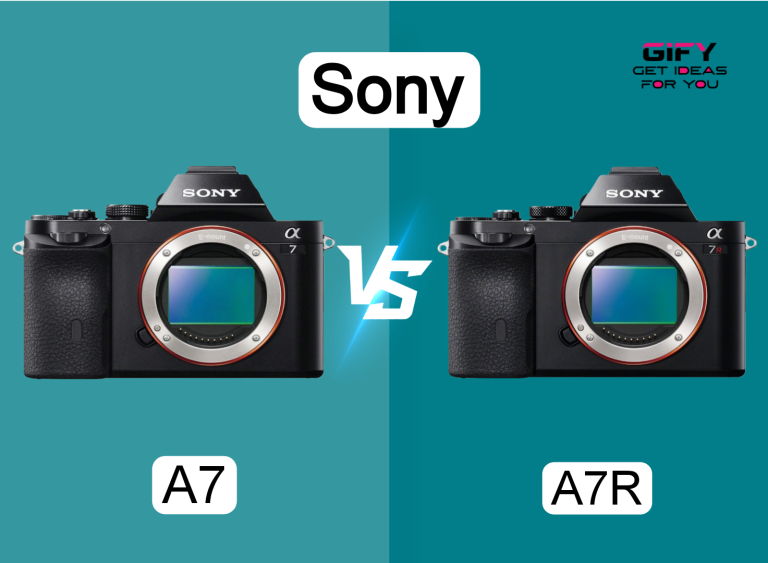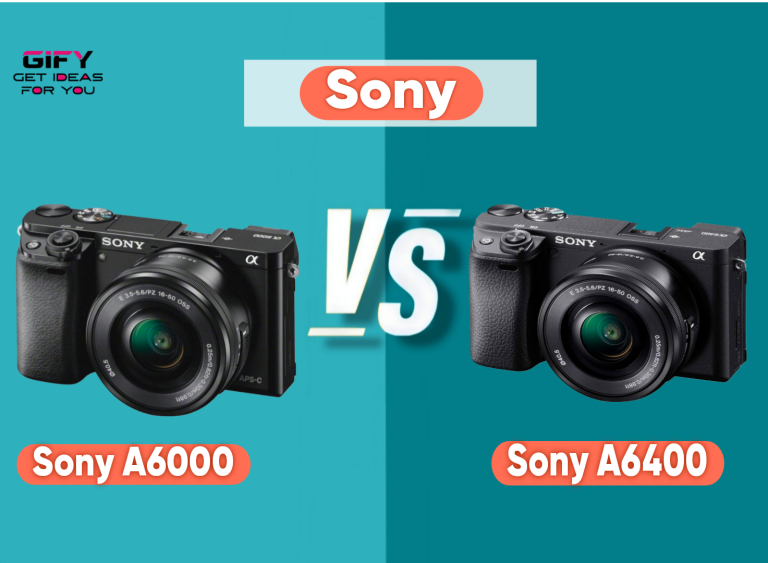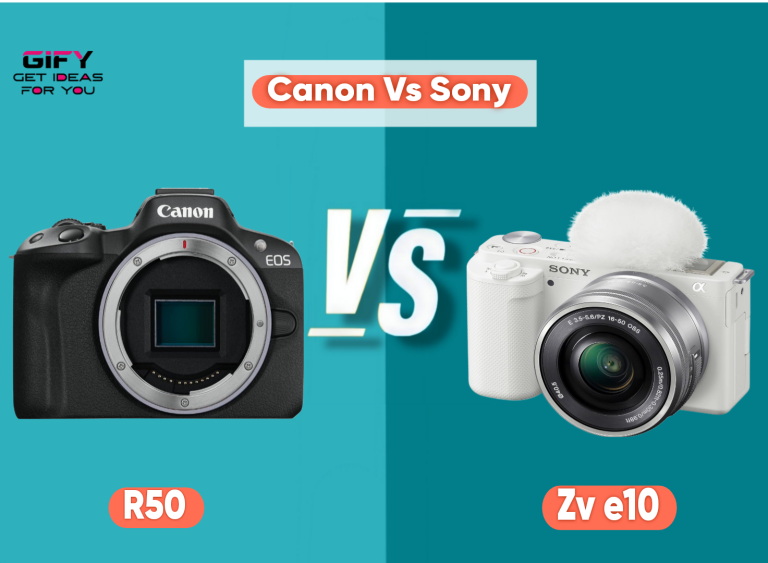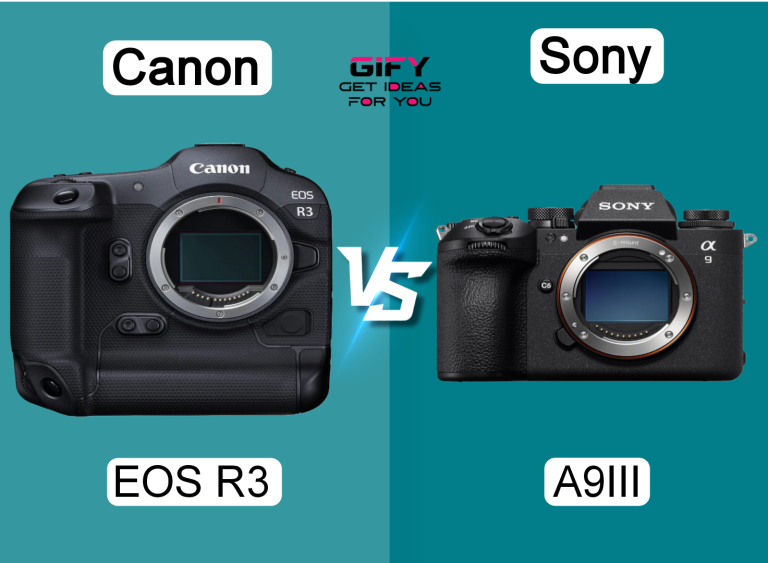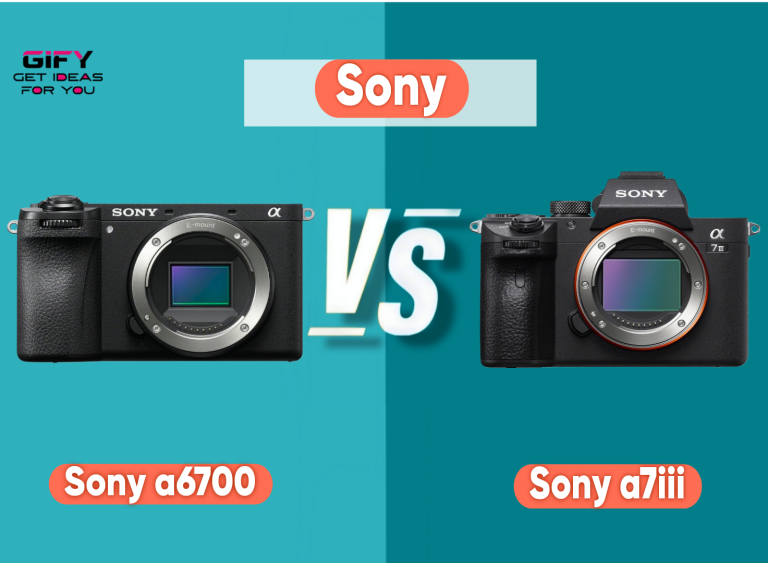Sony A6400 Vs A6700 are two of the most popular APS-C mirrorless cameras from Sony. Both are excellent for hybrid shooters who love both photography and videography. But with the A6700 bringing newer tech like an AI processor and 4K 120p recording, it’s natural to wonder if it’s worth the extra cost.
In this full sony a6400 vs a6700 comparison, we’ll dive deep into every detail — from autofocus and image quality to video features and battery performance. By the end, you’ll know exactly which camera fits your style, whether you’re a travel vlogger, portrait photographer, or someone upgrading from another Sony model.
Sony A6400- MirrorLess
Full Details
The Sony A6400 features a 24.2MP APS-C Exmor CMOS sensor paired with a powerful front-end LSI and BIONZ X image processor. It delivers incredible image quality with low noise and high dynamic range. With an ISO range up to 51,200, you can shoot in challenging lighting without worrying about image degradation.
Its autofocus system is lightning fast, locking focus in just 0.02 seconds with real-time eye and object tracking. This makes it a strong performer for action, wildlife, and street photography. The camera supports continuous shooting at up to 11fps with AF/AE tracking, ensuring you never miss critical moments.
Video shooters will appreciate its 4K recording with full pixel readout and no pixel binning. It oversamples 2.4x the data for crisp, detailed footage. The 180-degree tiltable touchscreen LCD makes vlogging easy, and there’s also a mic input for external audio — a huge plus for creators.
What I Like
The A6400’s autofocus is outstanding — it locks onto subjects quickly and tracks them with precision. The compact and lightweight body makes it perfect for travel and street shooting. The flip-up screen is great for vloggers, and image quality is excellent right out of the camera.
Its menu system is relatively straightforward, and you can customize buttons easily. The color science is natural, with pleasing skin tones that require minimal editing. The camera also has excellent compatibility with Sony’s E-mount lenses, giving you plenty of creative flexibility.
What Could Be Better
The biggest drawback is the lack of in-body image stabilization (IBIS). You’ll need lenses with optical stabilization for smoother handheld video. Also, the video recording limit is 30 minutes per clip, which can be restrictive for long shoots. The rolling shutter is noticeable during fast pans, and battery life is average at best.
Overall Opinion
The Sony A6400 remains a reliable choice in 2025. It’s compact, fast, and delivers sharp results. For photographers and vloggers who don’t need advanced video specs or IBIS, it offers excellent value. It’s one of the best mid-tier cameras for hybrid shooters entering the Sony ecosystem.
Sony A6700 : Lens Camera
Full Details
The Sony A6700 takes everything from the A6400 and elevates it. It’s powered by a 26MP back-illuminated Exmor R CMOS sensor, combined with the same BIONZ XR processor found in Sony’s high-end Alpha 7 IV. This pairing produces cleaner images, richer colors, and improved dynamic range.
What sets the A6700 apart is its dedicated AI processing unit. It recognizes human, animal, and even vehicle subjects with remarkable accuracy. The real-time tracking and eye AF are faster and more reliable, especially in challenging lighting conditions.
Video performance is top-tier. The A6700 can shoot 4K 60p oversampled from 6K for maximum detail. It supports 10-bit 4:2:2 internal recording with advanced codecs like All-Intra, ideal for professional workflows. You can even shoot 4K 120p slow motion for cinematic results. Plus, the A6700 adds 5-axis in-body stabilization, something the A6400 lacks.
What I Like
The A6700 delivers professional-grade video capabilities in a compact body. The addition of IBIS and the AI autofocus make a huge difference for both video and photography. It’s more stable, faster, and incredibly accurate when tracking moving subjects.
The menu system has been updated for easier navigation, and the ergonomics are more comfortable with a deeper grip. You also get better connectivity options, such as USB-C charging, dual memory card slots, and improved heat management during long recording sessions.
What Could Be Better
The A6700’s higher price may not suit casual users. Also, the rolling shutter is still present in some high-speed modes, though improved from the A6400. The new menu system, while better, can feel overwhelming at first. Lastly, the camera body is slightly heavier than its predecessor.
Overall Opinion
The Sony A6700 is a true hybrid powerhouse. It’s ideal for creators who want advanced video features and reliable performance for professional work. The combination of AI autofocus, IBIS, and improved video quality makes it one of the most capable APS-C cameras Sony has ever made.
Common Features
Both the Sony A6400 and A6700 share a strong foundation. They use Sony’s APS-C sensor technology, known for its crisp detail and low-light performance.
Both offer real-time eye autofocus, excellent image quality, and versatile E-mount compatibility. Each camera supports 4K recording, tilting touchscreens, and customizable controls. Both also include Wi-Fi and Bluetooth for easy file transfer and remote control through Sony’s Imaging Edge app.
Head-to-Head Comparison
Let’s dig into the sony a6400 vs a6700 differences that matter most.
Release Year: The A6400 launched in early 2019, while the A6700 debuted in 2023. That four-year gap is filled with significant tech updates, especially in processing and autofocus.
Sensor & Processor: The A6400’s 24.2MP sensor still holds up, but the A6700’s 26MP back-illuminated design offers cleaner performance and slightly better color depth. The newer BIONZ XR processor and AI chip in the A6700 produce faster image rendering and more precise autofocus tracking.
In-body Image Stabilization (IBIS): The A6400 lacks IBIS, relying solely on lens-based stabilization. The A6700 adds 5-axis stabilization, which is a major advantage for handheld video and low-light photography.
Autofocus: Both cameras excel, but the A6700’s AI-powered recognition system identifies humans, animals, birds, and even vehicles. The A6400 is still fast, but the A6700 feels noticeably smarter and more consistent in complex environments.
Video Recording: The A6400 shoots 4K at 30p with 8-bit color, while the A6700 can shoot 4K 60p and even 120p with 10-bit 4:2:2 sampling. The difference in color grading flexibility is huge for professional editors.
Video Recording Limit: The A6700 removes the 30-minute cap. You can record continuously without worrying about cutoff — perfect for interviews or long vlogs.
LCD Screen: Both cameras feature a tiltable touchscreen, but the A6700’s display has a higher resolution and better touch response. It’s also slightly more flexible for framing vertical content.
Ergonomics & Controls: The A6700 has a redesigned grip and a front command dial, making manual control faster. The A6400’s smaller body is lighter but less comfortable for long sessions.
Menu System: The A6700 uses Sony’s updated menu interface, borrowed from full-frame models. It’s better organized and supports touch navigation. The A6400’s menu is older and requires more navigation steps.
Memory Card Slot: The A6700 supports UHS-II cards for faster data writing, while the A6400 is limited to UHS-I. This helps the A6700 handle 10-bit video more efficiently.
Battery & Charging: Both use Sony’s NP-FW50 batteries, but the A6700 has improved efficiency and USB-C charging for convenience. You can power it directly via USB while shooting.
Other Features: The A6700 includes a digital audio interface, better cooling, and gyro metadata for stabilization correction in post-production — features missing on the A6400.
In short, the A6700 is the clear winner for professionals and content creators who demand modern tools and flexibility. The A6400 remains a fantastic option for hobbyists and photographers on a budget who still want Sony’s exceptional autofocus and image quality.
Related Articles
Sony A6100 vs A6400: 7 Powerful Differences Every Creator Should Know
FAQs : Sony A6400 Vs A6700
Is the Sony A6700 worth upgrading from the A6400?
Yes. The A6700 offers major upgrades like IBIS, AI autofocus, and 10-bit video, making it ideal for professionals or hybrid creators.
Does the Sony A6400 have in-body stabilization?
No. The A6400 doesn’t have IBIS. You’ll need lenses with OSS stabilization for smoother handheld video.
Which camera is better for vlogging?
The A6700 wins thanks to its stabilization and improved video specs. But the A6400 is lighter and still an excellent vlogging choice on a budget.
Can both cameras use the same lenses?
Yes. Both use Sony’s E-mount system, meaning all E and FE lenses are compatible with either body.
Does the A6700 overheat during 4K recording?
Not under normal conditions. Sony improved the cooling system in the A6700, allowing for longer recording sessions without heat issues.
Conclusion
The sony a6400 vs a6700 comparison shows how much Sony has evolved its APS-C lineup. The A6400 is still a reliable and affordable performer, while the A6700 stands out as a future-proof hybrid powerhouse.
If you’re serious about video, AI autofocus, and professional results, the A6700 is worth every penny. For those focused on photography or travel vlogging, the A6400 remains an excellent, budget-friendly choice.

